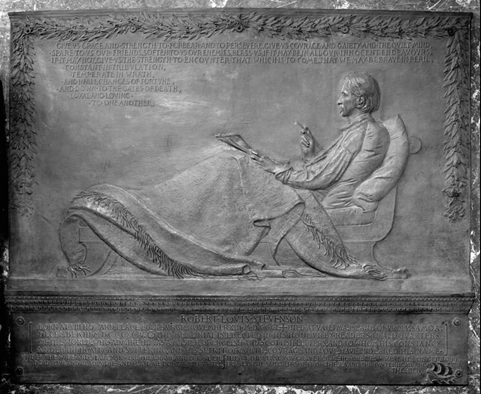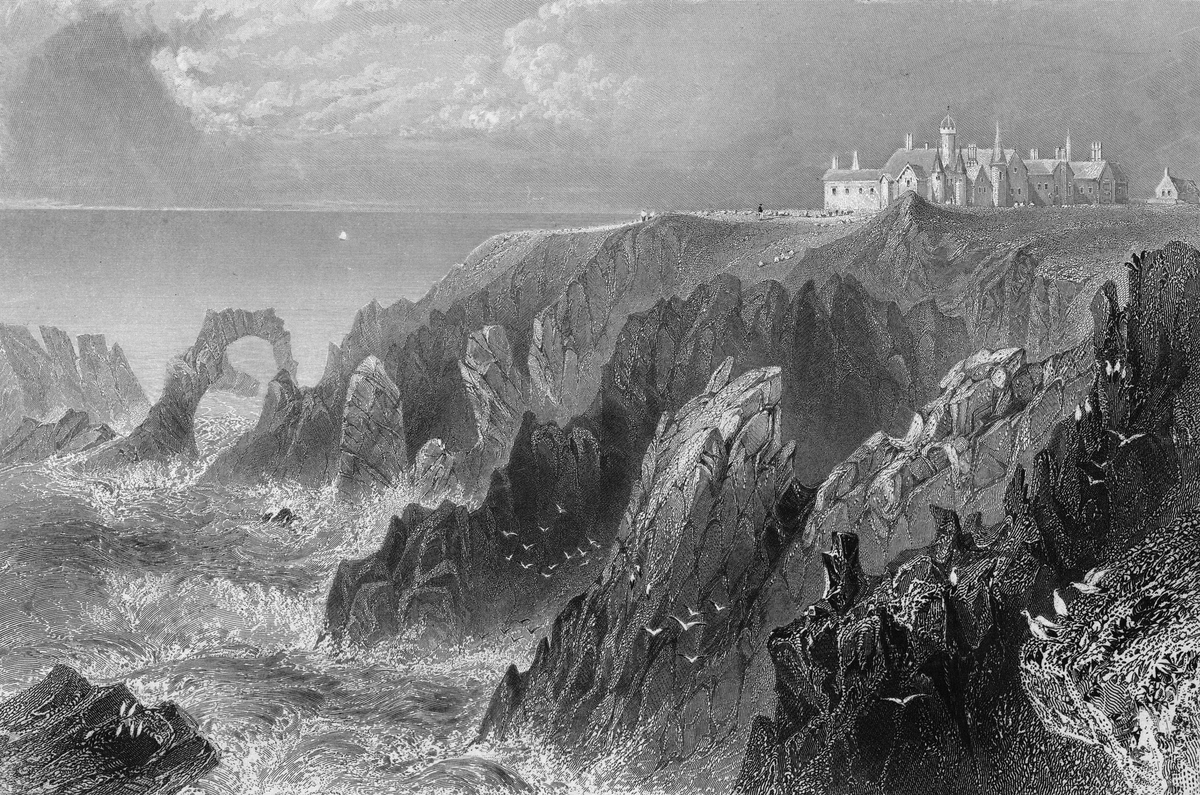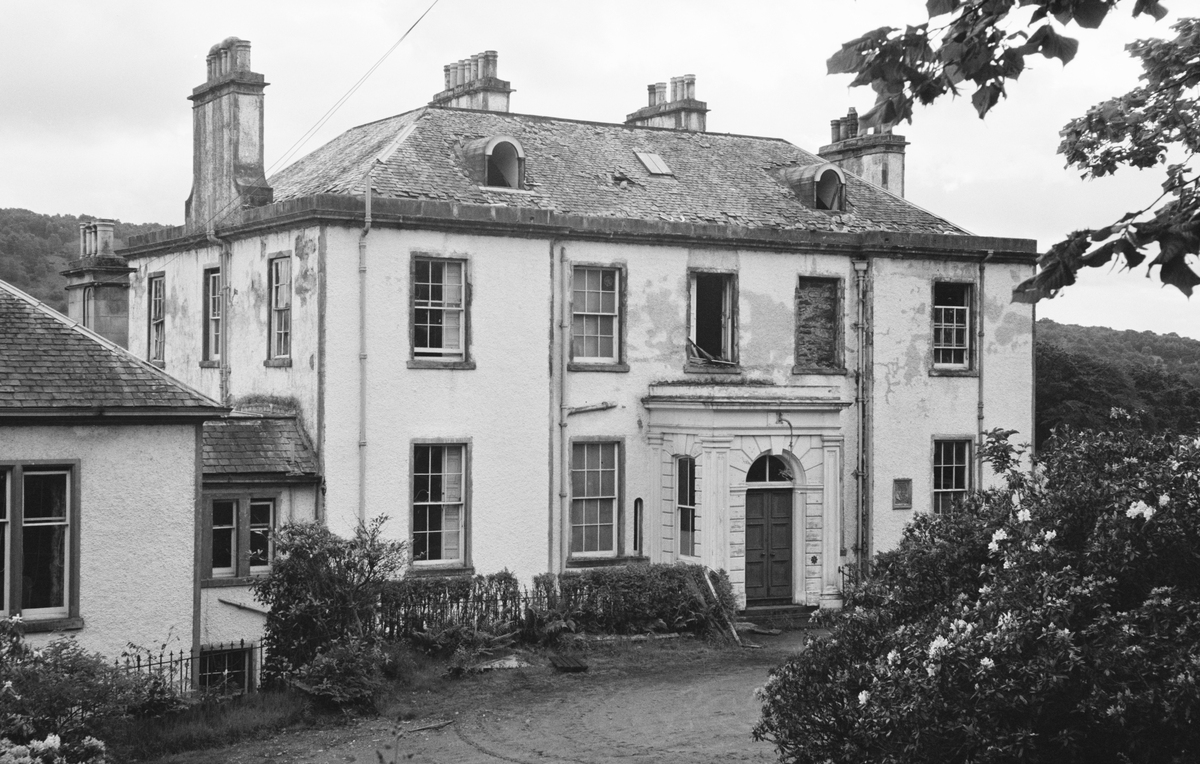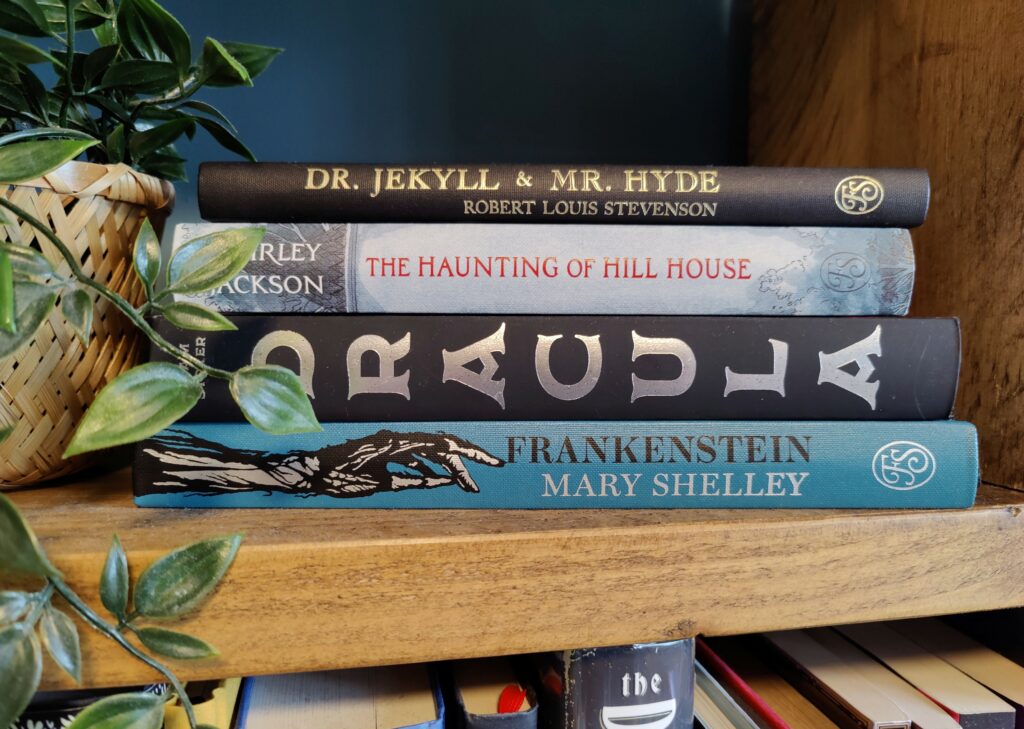Scotland is rich in myths and legends. The perfect fit for a candlelit night of horror stories. And Scottish folklore features many supernatural creatures! There are even tales of vampires and ghosts set in some of our properties! But, did you know Scotland also inspired some of the most iconic classic horror novels?
Here are 4 famous horror novels with Scottish connections you might not have heard of before!
Frankenstein (Mary Shelley, 1818)
Although 19th century Scotland, with its medical colleges and body snatchers, would have been a fitting stage for the creation of Frankenstein’s monster, Mary Shelley set the famous scene at the University of Ingolstadt in Germany. But the chilling novel does eventually take both Victor Frankenstein and his monster to Scotland. Shelley spent part of her childhood here, mainly near Dundee. But she also visited “the more picturesque parts”, as she explains in the Introduction of the 1831 edition of the book.
Shelley makes Victor Frankenstein travel to Scotland by way of England after promising his creature that he will make a female companion for him.
Victor visits Edinburgh and Perth with his good friend Clerval. He later secludes himself from him and the rest of the world in one of the most remote islands in Orkney. There, he is tormented by the thought of bringing another horrible being into the world. Unable to keep his promise, Victor destroys the still lifeless body of what could have become the “bride of Frankenstein”, and takes his scientific equipment on a boat to throw it into the sea.
Frankenstein’s monster, who had followed him on his journey, decides to enact his revenge by killing his creator’s loved ones so he’s as alone in the world as he is, since all of the humans he encounters are frightened by his appearance.
After falling asleep on his boat, Victor Frankenstein wakes up having arrived in Ireland, where he is accused of the murder of is his friend Clerval. Clerval was one of the first victims of his creature.

Ruined cottage, possibly in Orkney c.1845-1860. Check it out on trove.scot
William Brodie – cabinet maker and thief!
In 1788, the court case that would inspire Robert Louis Stevenson to write Strange Case of Dr Jekyll and Mr Hyde shook Edinburgh society.
By day, William Brodie was a cabinet maker, Deacon of the Incorporation of Wrights, and member of Edinburgh’s town council. He was well-known and well-respected, and socialised with the gentry of Edinburgh. As part of his job, he did not just build furniture, but also installed and repaired locks and other security mechanisms.
At night, Brodie was secretly a burglar and a thief who made use of his day job to make copies of people’s keys and gain knowledge of their security mechanisms. He stole money from banks and some of the richest members of Edinburgh society!
His criminal career continued for 20 years, and he even recruited the help of three other thieves. He also used the money he made with his criminal activities to gamble and maintain five children by two different mistresses, leading an incredibly busy and successful, double life!
It wasn’t until 1788, after a failed armed raid, that Brodie was eventually apprehended, trialled, and hanged at the Old Tolbooth along with one of his fellow thieves.
Robert Louis Stevenson was born in Edinburgh in 1850, more than half a century after William Brodie’s hanging. But his father owned furniture that had been made by him. And the nurse who often cared for him due to his chronic illness shared the tale of the Deacon’s secret life of crime.

Brodie’s Close (previously Little’s Close) in Edinburgh. Named after Deacon Brodie, who lived here in a house on the first floor. Zoom in on trove.scot
Strange Case of Dr Jekyll and Mr Hyde (Robert Louis Stevenson, 1886)
Dr Jekyll and Mr Hyde is set in London, and tells the tale of Dr Jekyll. Thanks to a strange concoction he has created, Dr Jekyll is able to turn into a younger and deformed version of himself. He takes advantage of it to create a new persona, Mr Hyde, and act on his worst impulses, including murder. The murderous Mr Hyde is much more violent than Deacon Brodie ever was. And Stevenson must have also taken inspiration for him from Edinburgh-based French teacher Eugene Chantrelle, who was his friend and was convicted and executed for the murder or his own wife in 1878.
Robert Louis Stevenson nay also have taken inspiration from his gay friends, Reverend Walter Jekyll, the protagonist’s namesake, Scottish Historian Horatio Brown, and poet John Addington Symonds, given their need to suppress a part of themselves and hide it from society. The novel certainly resonated with Symonds, who wrote to Stevenson saying about the book that: “The fact is that, viewed as an allegory, it touches one too closely.”
Stevenson’s fascination by the duality of human nature, as well as humans’ ability to harbour both good and evil tendencies, certainly went beyond his interest in the figure of Deacon Brodie and the life of his friends. He saw a dual nature in himself, who, during his youth, had frequented drinking dens and brothels under the nickname of “Velvet Coat”. Because of this part of his past, Stevenson was plagued by guilt all his life, and he skillfully used it to create what has become a horror classic.

Robert Louis Stevenson memorial, St Giles Cathedral, Edinburgh. Check it out on trove.scot
Dracula (Bram Stoker, 1897)
No list of gothic horror novels would be complete without Dracula. Although Bram Stoker’s tale is set in Romania, his stays in Scotland left their mark on the Irish author and what would become the most famous vampire novel.
Stoker was a frequent resident of Cruden Bay, a coastal fishing village 20 miles North of Aberdeen. He often vacationed there, with his visits between 1892 and 1910 being recorded by the visitors’ book of the Kilmarnock Arms Hotel.

Lithograph showing distant view of New Slains Castle. Check it out on trove.scot
During some of his visits, Stoker stayed at Hilton Cottage, owned by the Kilmarnock Hotel, and would sit to write in the cottage’s garden, where he had a clear view of the the New Slains Castle. This castle was the seat of the Hays of Erroll, and is thought to have been one of the inspirations for Castle Dracula. New Slains Castle is, like Castle Dracula, “at the very edge of a terrible precipice” and has an octogonal room that served as a reception hall, like the one where Jonathan Harker first meets Count Dracula at the beginning of the novel.

View of central octagonal space of New Slains Castle, 1975. Zoom in on trove.scot
Stoker never visited Romania, but Castle Dracula was also inspired by different castles in the region. His descriptions of the area and its customs have been found to be remarkably accurate, and were informed by works including Scottish travel writer Emily Gerard’s writing. You can read more about Emily Gerard and how she inspired the depictions of vampires in literature on another one of our blog posts.
The Haunting of Hill House (Shirley Jackson, 1959)
Shirley Jackson’s gothic horror novel, set in the United States in the 1950s, was inspired by the paranormal investigations that took place at what was once known as the “most haunted house in Scotland” in 1897.

Ballechin house in 1964. See it on trove.scot
Ballechin House, near Grandtully, Perthshire, was a Georgian state built in 1806 and inherited by Major Robert Steuart in 1834. During his time in India, Steuart came to believe in reincarnation and transmutation and stated that he would return after death and occupy the body of one of his dogs. After Steuart’s death in 1876, the property was inherited by John Skinner, his nephew, who had all his uncle’s dogs killed. The first reported haunting happened that same year, and many followed, earning the building its reputation as the most haunted house in the country.
In 1897, at a time when spiritualism was at its height, an investigation of the house was organised by John Crichton Stuart-3rd Marquess of Bute, and the Society of Psychical Research. A team of 35 investigators from this society stayed at the house to record their experiences, which were later published.
Despite not proving the presence of anything paranormal in the house, to the dismay and discredit of many of the paranormal researchers involved, the investigation at Ballechin House inspired Shirley Jackson to write The Haunting of Hill House. In this atmospheric horror story, Dr Montague, an investigator of the supernatural, rents a haunted house and invites a group of guests with prior experience with the paranormal to record their experiences, with their time at the house becoming much more eventful than the stay at Ballechin House!
About the author
Elina works as a Stone Conservator for the Applied Conservation team. She studied history, archaeology and heritage conservation, and loves comic books, fantasy, science fiction, Jane Austen, and reading stuff written over 100 years ago.

